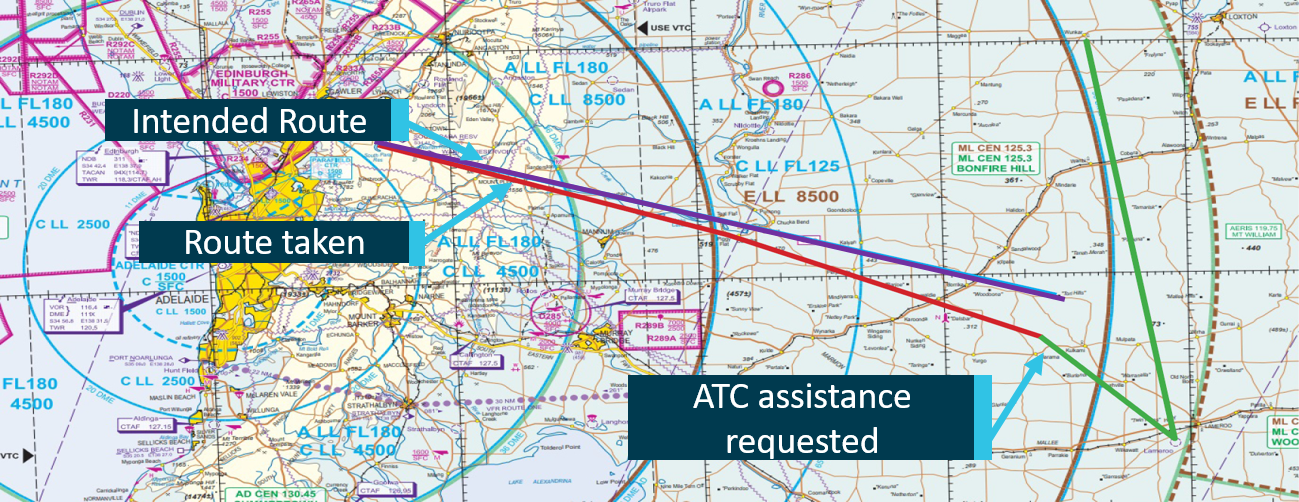| Occurrence Briefs are concise reports that detail the facts surrounding a transport safety occurrence, as received in the initial notification and any follow-up enquiries. They provide an opportunity to share safety messages in the absence of an investigation. |
What happened
On 9 May 2018, around 1150 Central Standard Time, the pilot of a Diamond DA 40 departed from Parafield South Australia (SA) on a solo-training visual flight rules (VFR) navigation exercise. The pilot planned to fly from South Para Reserve to Tori Hills, SA. As the flight progressed, the pilot lost directional awareness and subsequently conducted the 1 in 60-correction tracking [1] in the wrong direction taking the aircraft off course. The pilot then followed the operator’s lost procedure and contacted Air Traffic Control (ATC) for assistance. ATC directed the aircraft to Lameroo Aerodrome and from there the pilot was able to continue on the rest of the navigation without assistance.
Figure 1: Map of Area

Source: Airservices Australia
Safety action
As a result of this occurrence, the operator has advised the ATSB that they have taken the following safety actions:
- The trainee pilot conducted a dual sortie involving a more complex lost procedure.
- The operator held discussions on the use of the Global Navigation Satellite System (GNSS) as an aid in visual flying.
Safety message
This incident highlights the importance of requesting assistance from ATC when flight crew are unsure of the aircraft’s position. ATC are able to assist crew in locating positions using transponder codes, prominent landmarks and radio navigation. It is better to ask for assistance before fuel reserves are compromised.
__________


